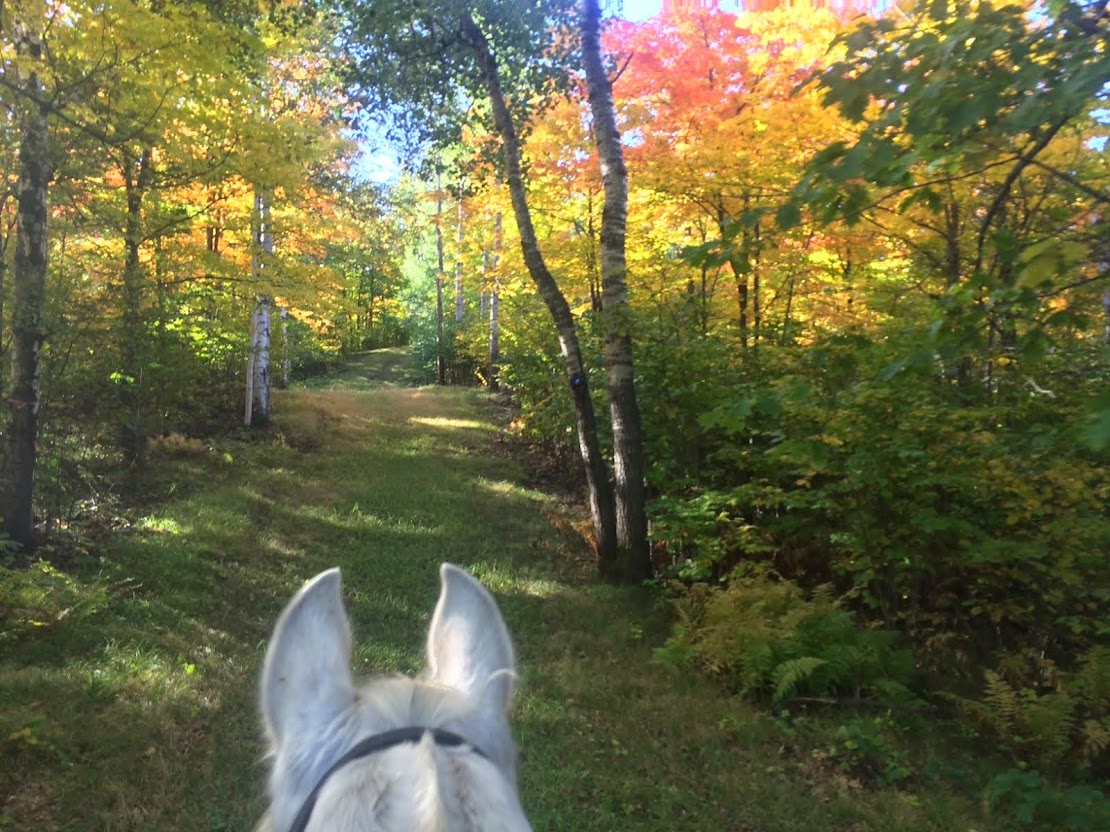Last week we had a bit of a cold snap. I think there was a day or two it didn't get above zero at all. And, of course, the wind. Judging from the various posts on Facebook at the time, it seemed a large chunk of the country was having a cold snap right along with us. It is all relative - a cold snap for, say, Tennessee, isn't the same, in real temperatures, as a cold snap here in Wisconsin. But I think the ways in which we all cope with our cold snaps are similar. A horse (or a human) used to the Wisconsin winter is pretty comfortable at the temperatures that are shiver-inducing in more southern climes. As long as you, and your horses, have been acclimated to the local environment, a cold snap of reasonable intensity and duration is usually not too much of a problem. For horses, that acclimatization actually occurs the previous year. Horses seem to grow coat related to the daylight length and coldness of their previous winter climate. Moving a horse from one region to another in the summer, before daylight really begins to shorten (the trigger to grow winter coat), is preferred, as that horse will grow a more appropriate winter coat for the new climate. However, in my experience, it seems that many horses don't have a truly appropriate winter coat until the *next* winter after a move. So, this year, Rhio has grown a coat appropriate to Colorado's cold, where he spent last winter. Obviously, there is lots of variation between individuals, and many other factors, especially nutrition and overall health, play into this. And Rhio's coat is adequate for Wisconsin, but it is certainly not as thick as it has been in previous years spent in Minnesota. He is a bit of a baby about the cold, anyway, and is fairly routinely blanketed, regardless of his coat. Red, too, was blanketed warmly for last week's cold snap. And, I went out every day to pamper them with warm beet pulp mashes, extra salt, and some warm molasses water to drink. "The Experts" say that the best thing you can do is *not* change your horses' routines during a weather change. But we all do, don't we? Extra feed, perhaps stalling them, decreasing turnout. And, truthfully, if you watch your own horses, they change their routine themselves. My guys spent time in their shelter, out of the wind. They don't normally spend much time in the shelter at all if the weather is milder. They hopefully ate more hay (the best way to stay warm), which means they hopefully were also drinking more water (though often horses drink less water in colder temperatures), as additional water is needed for digesting that additional hay! So, my "pampering" becomes more rational and logical (or so I like to think). Warm beet pulp is a great conduit for additional water intake, and a nice place to add some loose salt to further encourage drinking. It's also a fiber-based way to increase calories needed to stay warm, much like hay does. And, it gives me an excuse to bring them into the barn for a little while, giving them a break from the wind, and I can adjust blankets, check beneath to make sure all is well, etc. Invariably, upon going back out after pampering, they immediately went to the hay and started eating, and/or went over to the waterer for a drink. Yay! It makes me feel good that they are doing great, and I find feeding horses one of life's greatest pleasures. Really.
 |
| Hiding in their shelter on a windy, cold day |
 |
| Rhio knows good stuff comes from this tack room! |
 |
| Bliss - both boys munching away while I perch on a bucket and soak up happy horse vibes. |







No comments:
Post a Comment